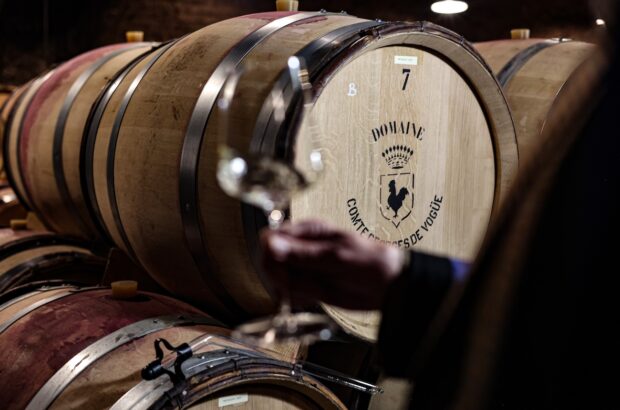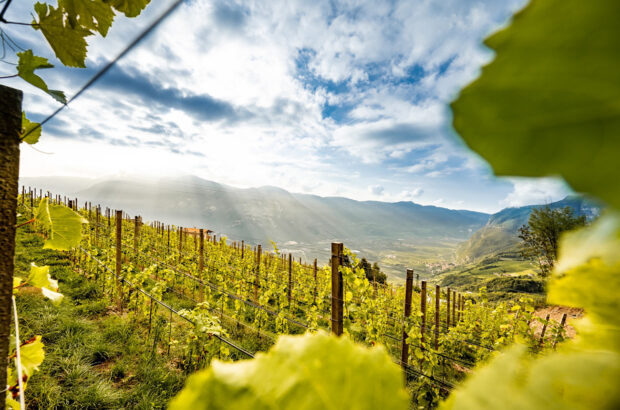Sarah Jane Evans MW, Christine Parkinson and Beth Willard tasted 59 Bobal wines with one outstanding and 15 highly-recommended wines.
Entry criteria: producers and UK agents were invited to submit their current-release vintage of reds or rosés made from 100% Bobal, or blends of at least 70% Bobal
The verdict
‘Nearly everything we tasted today was a wine you could enjoy and recommend,’ praised Christine Parkinson. ‘It’s as though there’s this whole grape variety that’s been waiting in the shadows, that suddenly leapt out fully fledged, ready to feature on wine lists and become our new favourite.’
The quality of the six Bobal rosés impressed. ‘I really liked the lighter- coloured wines,’ said Beth Willard. ‘They were super-fresh and delicate, pretty in colour, but they lost nothing with the intensity of fruit; there was still lots of lovely red fruit character.’
There was good diversity among the reds. ‘It quickly divided between those who felt they needed to use oak, and those who didn’t,’ Sarah Jane Evans MW observed. ‘We saw the differentiation between winemakers who are still making the more classic, traditional, domestic-style red wine, where an intrusion of oak dominated the fruit,’ agreed Willard. ‘But then you get the more modern – or more international – style, that’s much more balanced. I think Bobal makes a lovely, fruity, intense and often very fresh style of red wine.’
‘The freshness is amazing,’ agreed Evans. ‘If we’d been doing this tasting five years ago, we’d have been saying, “Bobal is a rustic grape and there’s a problem with the tannin”. Nobody talked [then] about the freshness. But you’ve got a grape here which you don’t have to tamper with to produce wonderfully fresh wines.’
Bobal’s great value was noted, too. ‘At any price point, these wines will offer quite a lot of value, as they come from regions which don’t necessarily have the same sort of iconic estates as in Priorat or Rioja, for example,’ said Willard. ‘So the pricing isn’t hanging off those halo wineries. You’re going to get a lot of wine for your money.’
‘The other bonus is that, because of the climate in these regions, a lot of these Bobals are organic,’ added Evans. ‘So if you’re looking for that, it’s something worth checking out.’
Scroll down to see tasting notes and scores for the top Bobal wines
Why is Bobal on the rise? ‘There’s a new generation coming into Utiel-Requena and Valencia, and quite often they’re taking family vineyards and bringing outside influences,’ said Evans. ‘Others are happy to really question what they’re doing, or to recognise that they’ve got these amazing old bush vines. I suspect there are a few people having to fight against tradition, but actually the turnaround has been very rapid. There are people who know about the external market, about foreign tastes, and are making those wines.’
‘I think a broader trend is trickling down into lots of different regions,’ commented Willard. ‘Winemakers and growers are saying to me that they’re actually returning to their past. Yes, there’s the influence of modern technology and winemaking, but all they’re doing is going back to these wonderful old vines – which are like the jewel of Spain – and indigenous varieties, and respecting the terroir.’
The next step is communicating this to the world’s wine lovers. ‘There’s no perception of Bobal among consumers at all,’ said Parkinson. ‘Bobal would normally only sell if it was very cheap or if it wasn’t really featured as Bobal.’
‘But that’s OK,’ added Willard. ‘Bobal can [therefore] create an image. It’s really easy to say, no matter how you pronounce it, which is an advantage – and it can create its own space in the market with these new wine styles. Doing a tasting like this, where you can identify some really top wines, is the best starting point.’
Discussion copy by Julie Sheppard.
The Bobal scores:
59 wines tasted
Exceptional 0
Outstanding 1
Highly Recommended 15
Recommended 34
Commended 4
Fair 2
Poor 0
Faulty 3

Credit: Maggie Nelson
Bobal wines: the facts
Bobal is Spain’s third most-planted variety, with 62,000ha, after Tempranillo and Airén.
Utiel-Requena DO Created 1957. An hour’s drive inland from Valencia city, located on a plateau 600m-900m above sea level. The DO is named after the two towns of Utiel and Requena. Climate favours organic growing. In production terms, Utiel-Requena dominates the Bobal leaderboard. Vineyard area 32,567ha, of which 67% is Bobal. 40% of the vines are older than 40 years.
Manchuela DO Created 2004. In Cuenca province, between Utiel-Requena and Ribera del Júcar. 600m-1,100m above sea level. The land is carved out between the rivers Júcar and Cabriel to its north. Vineyard area 11,622ha. Total volume 768,400hl, of which 72% is red. Bobal, the leading red variety, accounts for 41% of red production.
Ribera del Júcar DO Created 2003. In Cuenca province, at an altitude of 650m-750m. Vineyard area 6,700ha. Bobal accounts for 34%.
El Terrerazo Created 2010. Valencia’s first Vino de Pago, at the edge of the Utiel-Requena DO, 800m above sea level. Organic, 87ha on limestone.[/breakout]
About Bobal
Widely planted in Spain’s southeast, Bobal has a name for rather rustic reds. But refinements in production and enlightened marketing mean its fortunes are shifting, says Sarah Jane Evans MW
Five letters. Easy to pronounce, easy to remember: Bobal. What more could a grape variety want for success? Well, in the case of Bobal, quite a lot. It flourished across the highlands in southeastern Spain, but the wines that reached international markets were seen as varyingly alcoholic, or rustic, or both. Grudgingly, they were approved for their lusty, full-flavoured, full-coloured rosados. Despite that, they never escaped the third-class mould.
Bobal is a variety with potential, much still to be realised. What it needs is care and attention. One theory has it that the name of the variety comes from its appearance, similar to the shape of a bull’s head (bovale).
Individual bunches can weigh as much as a kilo, but may be uneven in weight across the bush. The added problem with this high-yielding vine is that the medium-sized, thick-skinned berries ripen unevenly within a bunch, giving green flavours. This certainly helped to foster its reputation for rusticity, as did its tannins, which need careful management, and its potential to create high alcohol levels.
Changing tides
However, things are looking up for Bobal. The fact that this is the first panel tasting for the variety at Decanter is a reflection of that. Some of the change is a result of marketing: Utiel-Requena, a heartland of Bobal, has been busy talking to the outside world.
Traditionally, the Bobal production zone was dominated by cooperatives and bulk wines. It’s only in the last two decades that private wineries have blossomed. El Terrerazo, a singular project from Bodega Mustiguillo, has built an international reputation as a Vino de Pago (single vineyard), winning medals –including a DWWA Trophy – for its Bobals. This was undoubtedly another driver for Bobal.
The transformation in Bobal’s reputation is obvious in Ribera del Júcar. The DO reports that, as recently as 20 years ago, some 10% of the Bobal vineyard was uprooted, losing, ‘sadly, the oldest vines’. Today, it works with Manchuela and Utiel-Requena on joint projects to preserve and recuperate the variety.
It’s now possible to seek out single-vineyard expressions. Some producers highlight their particular soil types; some are reining in their use of oak. A few are using amphorae. In fact, with a pH at about 3.35-3.50, producers are showing that the ‘difficult’, ‘rustic’ Bobal can be immensely adaptable, producing long-lasting reds, fresh rosados and sparkling wines.
Top-scoring Bobal wines from the panel tasting:
The judges
Sarah Jane Evans MW
Evans is an awarded journalist, author and broadcaster in food and wine, with a particular interest in Spain. A Master of Wine since 2006, she is chairman of Spain’s Gran Orden de Caballeros del Vino, author of The Wines of Northern Spain, and one of three Co-Chairs overseeing the Decanter World Wine Awards.
Christine Parkinson
Parkinson is co- founder and drinks consultant at Brimful Drinks. Starting out in the kitchen and rising to head chef, she went on to become worldwide group head of wine for the Michelin-starred Hakkasan Group. Having led her team to the WSET Educator of the Year global award in 2016, she left Hakkasan in 2019.
Beth Willard
After moving to the UK from Australia, Willard worked in several buying roles before that of buying manager at Direct Wines. Now working with Winetraders to introduce new wines from Spain and Eastern Europe to the UK, she is a member of Spain’s Gran Orden de Caballeros de Vino and the Confrérie de Tokaj.







